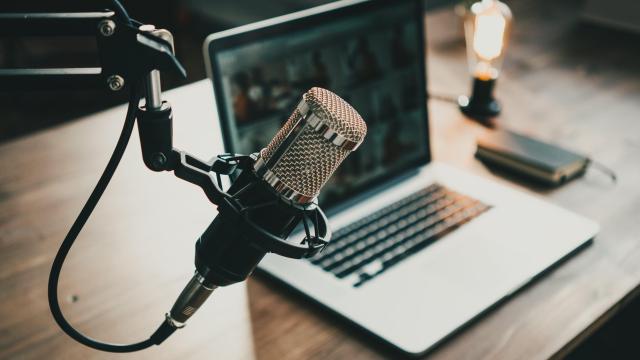It’s easy to start your own podcast. They’re as ubiquitous now as personal blogs were in the early 2000s. But they present their hosts with the same issue bloggers had back then: You can overshare or create (what you think is) brilliant content — but is anybody listening?
There are ways to make your podcast stand out in the sea of audio offerings. There are ways to get people to listen.
Make sure your podcast has quality content
This seems obvious, but it’s true: You have to feature content that people care about, no matter what your focus is.
“Listeners want value,” explained Rob Goodman, executive producer of Wix’s “Now What?” podcast, which looks at “how technology is changing everything.” “This value can exist in many forms — from laughter, entertainment, information, or just a really gripping story.”
B. Mosiah Fulton, who works behind the scenes with the “What You Thought?” podcast, agreed: “People want to laugh, and all good jokes contain truth.”
Goodman, who also produced the Webby-nominated “Design Better” podcast by InVision and produces and hosts his own show called “Making Ways,” added, “Listeners also want access — access to people or insights that they don’t come across in their everyday lives. That’s the superpower that podcasts can unlock for listeners and it’s an advantage for brands that can establish themselves as a source for this kind of content as they build strong long-term relationships with audiences.”
How to perfect your podcasting voice
You don’t have to alter your voice like a telecaster in the 1950s or talk about topics you don’t understand to get an audience. What you really have to do is talk about things you do know and do care about. Someone else out there cares about those same things, too.
“Stay true to yourself and your audience will grow as you grow,” said Fulton, who has seen “What You Thought?” surpass 500,000 total views in a little over half a year. “People don’t want to hear anything that isn’t genuine, so authenticity is the key to reaching and captivating your audience.”
Still, Fulton believes it’s “an unwise decision” to measure your pod’s success by views and plays.
“How many of these views translate to actual fans?” he asked. “It is important to build a core fan base. This is where a lot of budding podcasts fail. Learn your core audience. Don’t target a particular audience, but get to know who you are really making the show for.”
Goodman also warned against shilling and recommended being sincere: “What listeners don’t want is a 30-minute commercial for your podcast or service disguised as content. They definitely don’t want aimless conversation just for the sake of keeping the podcast feed going. Without intention and value, your podcast will end up on the unsubscribe heap.”
Release episodes on a consistent schedule
With all the tools you need to record and upload an episode in your own home, you might think you’ll be churning out shows all the time. But think about your other domestic tasks. Did you swear to yourself that you were going to put away that basket of folded clothes? Did it end up on the “laundry chair” in your room? Again?
Just because you have access to all the right resources doesn’t mean you’ll actually use them, especially now, when so much of our work and play has transitioned to our homes. It’s easy to put off things you need to do, from changing a lightbulb to recording your podcast.
Do not put it off. Take this seriously. If you have listeners — and you want listeners — you need to give them content consistently.
“The cast and crew shoot weekly,” Fulton said. “This is extremely important! Stay consistent, make a shooting schedule, and stick to it. Get your crew together — or, if you are a one-person production, get your equipment in order — and shoot!”
Promoting your podcast across platforms
“What You Thought?” isn’t just available on platforms like Spotify and Soundcloud; it has a video and social media component, too. Episodes are recorded not only with audio distribution in mind, but with an additional video element, to appeal to an audience that prefers YouTube over Apple Podcasts.
Not everyone loves listening to audio. This writer, for instance, hates it, but will consume podcast episodes on YouTube happily. Consider cross-platform promotion to secure the greatest number of fans. Goodman recommends having “a unified voice and brand that extends beyond the audio waves and into the copy, visual identity, and social media assets that reach listeners in the communities they occupy online.”
Don’t just promote across your own socials, either. Network! Find other people producing similar shows and ask them to collaborate.
“One of the top ways that people learn about new podcasts is through the podcasts they already listen to, know, and love,” Goodman said. “For podcasters, whether that be trading interviews across shows, swapping ad placements, or doing in-kind shout-outs in an episode introduction or blog post, that goes a long way in organically and authentically connecting you with future listeners.”
He added that, “No podcast is an island.” You need fans, supporters, and collaborators to make this work — but once you’ve got them all lined up, listeners will come.

Leave a Reply
You must be logged in to post a comment.